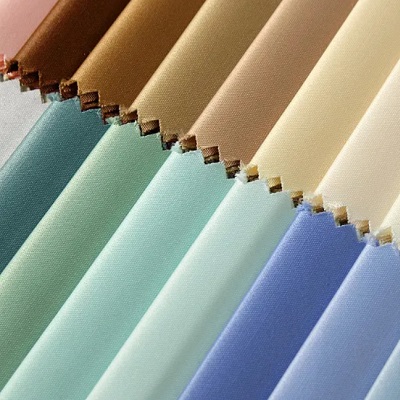Woven fabrics are one of the oldest and most widely used textile categories in the world. Known for their durability, strength, and stability, they are indispensable in fashion, home furnishings, and technical industries. Unlike knitted fabrics, which are looped, woven fabrics are produced by interlacing two sets of yarns (warp and weft), resulting in a more structured fabric with endless design possibilities.
Main Characteristics of Woven Fabrics
- Durability: Strong and long-lasting due to tightly interlaced yarns.
- Shape Retention: Less stretch compared to knits, ideal for tailored garments.
- Design Versatility: Wide range of weaves such as plain, twill, and satin.
- Surface Variety: Smooth, textured, or patterned finishes for different looks.
- Wide GSM Range: From lightweight chiffon to heavyweight denim and canvas.
Applications of Woven Fabrics
1. Fashion & Apparel
Woven fabrics are a top choice for formal and structured garments. Common uses include:
- Shirts and blouses made from cotton poplin or broadcloth
- Denim jeans, jackets, and casual wear
- Suits, trousers, and dresses requiring shape and drape
- Outerwear fabrics like gabardine and tweed
2. Home Textiles
In interior design and home living, woven fabrics add durability and elegance:
- Upholstery fabrics for sofas and chairs
- Curtains, draperies, and decorative cushions
- Table linens and bed covers
3. Industrial & Technical Uses
Woven fabrics extend beyond fashion and home, serving vital industrial applications:
- Workwear and uniforms requiring strength and protection
- Protective fabrics with fire-resistant, water-repellent, or UV-resistant properties
- Automotive interiors and seat covers
- Medical and filtration textiles
Global Trends in Woven Fabrics (2025)
- Sustainability: Growing demand for organic cotton, hemp, and recycled fibers.
- Luxury Innovation: Premium blends of wool, silk, and linen with modern finishes.
- Smart Woven Textiles: Functional fabrics integrated with sensors for smart wearables.
- Digital Printing: High-resolution designs transforming traditional woven fabric patterns.
Sourcing Guide for International Buyers
When purchasing woven fabrics, buyers should carefully consider:
- Weave Type: Choose based on the garment or application requirement.
- Fabric Weight (GSM): Ensure correct density for durability and comfort.
- Color Fastness & Shrinkage: Check for consistent performance during washing.
- Certifications: OEKO-TEX, GOTS, or REACH compliance for sustainability and safety.
- MOQ & Lead Time: Reliable suppliers offer flexible orders and on-time delivery.
Conclusion
With their strength, elegance, and wide adaptability, woven fabrics remain a cornerstone of the textile industry. From high-fashion suits to durable industrial textiles, they continue to meet the evolving needs of global markets.
At [Your Company Name], we supply a wide range of woven fabrics — from lightweight shirtings to heavy-duty denims and technical textiles. With strict quality control and international certifications, we are a trusted partner for fashion brands, wholesalers, and industrial buyers worldwide.
Contact us today to explore our woven fabric collections and request free samples.


